1.
Introduction and main result
In this paper, we are interested in the existence and some asymptotic properties of ground state homoclinic orbits for the following first-order Hamiltonian system
with the Hamiltonian function
Here, z=(u,v)∈RN×RN=R2N, ϵ>0 is a parameter, L is a symmetric 2N×2N matrix-valued function, and
is the usual symplectic matrix with I being the identity matrix in RN. As usual, we refer to a solution z of system (1.1) as a homoclinic orbit if z(t)≢0 and z(t)→0 as |t|→∞.
It is widely known that Hamiltonian systems are very important dynamical systems, which have many applications in several natural science areas such as relativistic mechanics, celestial mechanics, gas dynamics, chemical kinetics, optimization and control theory and so on. The complicated dynamical behavior of Hamiltonian systems has the attracted attention of many mathematicians and physicists ever since Newton wrote down the differential equations describing planetary motions and derived Kepler's ellipses as solutions. For more details on applications of Hamiltonian systems, one can refer to [1] and the monograph [2] of Mawhin and Willem. We also refer the readers to see [3] for the Stokes-Dirac structures of the port-Hamiltonian systems.
In the past few decades, Hamiltonian systems have attracted a considerable amount of interest due to many powerful applications in different fields; the literature related to these systems is extensive and encompasses several interesting lines of research on the topic of nonlinear analysis, including the existence, nonexistence, multiplicity and finer qualitative properties of homoclinic orbits. Here we cannot provide a complete and fully detailed list of references, but rather we limit ourselves to mentioning the works which are closely related to the content of the present paper.
A major breakthrough was the pioneering paper of Rabinowitz [4] from 1978 who, for the first time, obtained periodic solutions of system (1.1) by using variational methods. After the celebrated work of Rabinowitz [4], based on the dual action and mountain pass argument, Coti-Zelati et al. [5] obtained the existence and multiplicity of homoclinic orbits under the condition of strictly convexity. Later on, this result was further detailed by [6,7] in which the authors established the existence result for infinitely many homoclinic orbits. Without the convexity condition, Hofer and Wysocki [8] independently investigated the existence of homoclinic orbits by combining the Fredholm operator theory and the linking argument. Tanaka [9] employed a suitable subharmonic approach to obtain one homoclinic orbit by relaxing the convexity condition. In [10], Rashkovskiy studied the quantization process of Hamiltonian and non-Hamiltonian systems.
The main unusual feature of the first-order Hamiltonian system is that the associated energy functional is strongly indefinite. Generally speaking, for the strongly indefinite functionals refined variational methods like the Nehari manifold method and mountain pass theorem still do not apply. Some general critical point theories like the generalized linking theorem and other weaker versions for strongly indefinite functionals were subsequently developed by Kryszewski and Szulkin in [11] and Bartsch and Ding in [12]. Since then, based on the critical point theorems from [11,12] for strongly indefinite functionals, many scholars have gradually begun to investigate the existence and multiplicity of homoclinic orbits for non-autonomous Hamiltonian systems under some different conditions. More precisely, under the conditions that H depends periodically on t and has super-quadratic growth in z, Arioli and Szulkin [13], Chen and Ma [14], and Ding and Willem [15] obtained the existence result. Ding [16], Ding and Girardi [17], and Zhang et al. [18] studied the multiplicity result for homoclinic orbits. Concerning the asymptotic quadratic growth case, we refer to the work done by Szulkin and Zou [19] and Sun et al. [20]. Here we would like to emphasize that the periodicity condition is used to resolve the issue stemming from the lack of compactness since system (1.1) is set on the whole space R.
On the other hand, without the condition of periodicity, the non-periodic problem is quite different due to the lack of compactness of Sobolev embeddings. In an early paper [21], Ding and Li utilized the coercive property of L to establish a variational framework with compactness, and they proved the existence of homoclinic orbits for the super-quadratic growth case. Also under the framework of compactness, Zhang and Liu [22] studied the sub-quadratic growth case. Regarding the asymptotically quadratic case, based on the infinite-dimensional linking argument, Ding and Jeanjean [23] established a multiplicity result for homoclinic orbits. Moreover, they imposed a control on the size of G with respect to the behavior of L to recover sufficient compactness. For the existence and exponential decay of homoclinic orbits for system (1.1) with nonperiodic super-quadratic and lack of compactness, we refer the reader to [24]. We also mention the recent paper by Zhang et al. [25] in which the existence and decay of ground state homoclinic orbits for system (1.1) with asymptotic periodicity are explored. For other results related to the Hamiltonian systems with strongly variational structure, we refer the reader to [26,27,28,29,30,31,32] and the references therein.
It is worth pointing out that, in all of the works mentioned above, the authors were concerned mainly with the study of the existence and multiplicity of homoclinic orbits, and there are no papers considering the asymptotic properties of homoclinic orbits. Inspired by this fact and the work done by Alves and Germano [33] in which the authors investigated the existence and concentration of ground state solutions for the Schrödinger equation; in the present paper we aim to further study the existence and some asymptotic properties of ground-state homoclinic orbits for system (1.1) with Hamiltonian function (1.2). This is a very interesting issue that has motivated the present work.
To continue the discussion, we introduce the following notation
then, system (1.1) takes the following form
Before stating our results, we suppose the following conditions hold for L, A and G.
(L) L is a constant symmetric 2N×2N matrix such that σ(JL)∩iR=∅, where σ denotes the spectrum of operator JL.
(A) A∈C(R,R) and 0<inft∈RA(t)≤A∞:=lim|t|→∞A(t)<A(0)=maxt∈RA(t);
(g1) Gz(|z|)=g(|z|)z, g∈C(R+,R+), and there exist p>2 and c0>0 such that
(g2) g(s)=o(1) as s→0, and G(s)/s2→+∞ as s→+∞;
(g3) g(s) is strictly increasing in s on (0,+∞).
Next we state the main result of this paper as follows.
Theorem 1.1. Assume that conditions (L), (A), and (g1)-(g3) hold. Then we have the following results:
(a) there exists ϵ0>0 such that system (1.1) has a ground state homoclinic orbit zϵ for each ϵ∈(0,ϵ0);
(b) |zϵ| attains its maximum at tϵ, then,
moreover, zϵ(t+tϵ)→z as ϵ→0, where z is a ground state homoclinic orbit of the limit system
(c) additionally, if A,g∈C1, and g′(s)s=o(1) as s→0, then there exist constants c,C>0 such that
We would like to emphasize that since our problem is carried out in the whole space, then the strongly indefiniteness of energy functionals and the lack of compactness are two major difficulties that we encounter in order to guarantee the existence of homoclinic orbits. More precisely, one reason is that strongly indefinite functionals are unbounded from below and from above so that the classical methods from the calculus of variations do not apply. The other reason is that the lack of compactness leads to the energy functionals not satisfying the necessary compactness property.
Let us now outline the methods involved to prove Theorem 1.1. Indeed, based on the above reasons, first, we will take advantage of the method of the generalized Nehari manifold developed by Szulkin-Weth [34] to handle system (1.1), this is because such a strategy helps to overcome the difficulty caused by strongly indefinite features. Second, we must verify that the energy functional possesses the necessary compactness property at some energy level. This target will be accomplished by applying the energy comparison argument to establish some precise comparison relationships for the ground-state energy value between the original problem and certain auxiliary problems. Finally, combining the compactness analysis technique, Kato's inequality, and the sub-solution estimate, we can obtain the concentration property and decay of homoclinic orbits. Then Theorem 1.1 follows naturally.
This paper is organized as follows. In Section 2, we establish the functional analytic setting associated with system (1.1). In Section 3, we present some technical results, and obtain the existence result for ground-state homoclinic orbits for the autonomous system. Section 4 is devoted to proofs of Theorem 1.1.
2.
Functional analytic setting
Throughout the present paper, we will use the following notations:
● ‖ denotes the norm of the Lebesgue space L^{s}(\mathbb{R}) , 1\leq s\leq +\infty ;
● (\cdot, \cdot)_{2} denotes the usual inner product of the space L^{2}(\mathbb{R}) ;
● c , c_i , C_{i} represent various different positive constants.
In what follows, we will establish the variational framework to work for system (1.1).
Recall that S = -(\mathscr{J}\frac{d}{dt}+L) is a self-adjoint operator on the space L^{2}: = L^{2}(\mathbb{R}, \mathbb{R}^{2N}) with the domain \mathcal{D}(S) = H^{1}(\mathbb{R}, \mathbb{R}^{2N}) ; according to the discussion in [13], we can know that, under the condition (L) , there exists a > 0 such that (-a, a)\cap \sigma(S) = \emptyset (see also [16,19]). Therefore, the space L^{2} has the following orthogonal decomposition
corresponding to the spectrum decomposition of S such that S is positive definite (resp. negative definite) in L^{+} (resp. L^{-} ).
We use |S| to denote the absolute value of S , and |S|^{1/2} denotes the square root of |S| . Let E = \mathscr{D}(|S|^{1/2}) be the domain of the self-adjoint operator |S|^{1/2} , which is a Hilbert space equipped with the following inner product
and the norm \|z\|^{2} = (z, z) . Evidently, E possesses the following decomposition
which is orthogonal with respect to the two inner products (\cdot, \cdot)_{2} and (\cdot, \cdot) . Moreover, by using the polar decomposition of S we can obtain that
Furthermore, from [16] we have the embedding theorem, that is, E embeds continuously into L^{q} for each q\geq 2 and compactly into L^{q}_{loc} for all q\geq1 . Hence, there exists a constant \gamma_{q} > 0 such that for all z\in E
From the assumptions (g_{1}) and (g_{2}) , we can deduce that for any \epsilon > 0 , there exists a positive constant C_{\epsilon} such that
Next, we define the corresponding energy functional of system (1.3) on E by
Applying the polar decomposition of S , then the energy functional I_{\epsilon} has another representation as follows
Evidently, according to condition (L) , we can see that I_{\epsilon} is strongly indefinite. Furthermore, from conditions (g_{1}) and (g_{2}) we can infer that I_{\epsilon}\in C^{1}(E, \mathbb{R}) , and we have
Making use of a standard argument we can check that critical points of I_{\epsilon} are homoclinic orbits of system (1.1).
3.
The autonomous system
We shall make use of the techniques of the limit problem to prove the main results; in this section we introduce some related results for the autonomous system.
For any constant \mu > 0 , in what follows we consider the autonomous system given by
Similarly, following the above comments, we define the energy functional I_{\mu} corresponding to system (3.1) as follows
Evidently, we have
In order to obtain the ground state homoclinic orbits of system (3.1), we will use the method of the generalized Nehari manifold developed by Szulkin and Weth [34]. To do this, we first introduce the following generalized Nehari manifold
and we define the ground state energy value c_{\mu} of I_{\mu} on \mathscr{N}_{\mu}
Furthermore, for every z\in E\backslash E^{-} , we also need to define the subspace
and the convex subset
We note that E(z) and \widehat{E}(z) do not depend on \mu , but depend on the operator S .
The main result in this section is the following theorem:
Theorem 3.1. Assume that condition (L) holds and let (g_{1}) - (g_{3}) be satisfied, then, problem (3.1) has at least a ground state homoclinic orbit z\in\mathscr{N}_{\mu} such that I_{\mu}(z) = c_{\mu} > 0 .
3.1. Technical results
In this subsection, we are going to prove some technical results which will be used in the proof of Theorem 3.1. The following result involves the translation that will be used frequently in this paper, the proof can be found in [33, Lemma 2.1].
Lemma 3.1. For all u = u^{+}+u^{-}\in E and y\in\mathbb{R} , if v(t): = u(t+y) , then v\in E with v^{+}(t) = u^{+}(t+y) and v^{-}(t) = u^{-}(t+y) .
We give an important estimate, which plays a crucial role in the later proof.
Lemma 3.2. Let z\in \mathscr{N}_{\mu} , then, for each v\in \mathcal{H}: = \{sz+w: s\geq -1, w\in E^{-}\} and v\neq 0 , we have the following energy estimate
Hence z is a unique global maximum of I_{\mu}|_{\widehat{E}(z)} .
Proof. We follow the similar ideas explored in [34, Proposition 2.3.] to prove this lemma. Observe that, for any z\in \mathscr{N}_{\mu} , we directly obtain
Let v = sz+w\in\mathcal{H} , then, z+v = (1+s)z+w\in \widehat{E}(z) . By an elemental computation, we can get
where
Using (g_2) and (g_3) and combining the arguments used in [35] (see also [36]), we can conclude that \widetilde{g}(s, z, v) < 0 . Therefore, we have
Evidently, we know that z is a unique global maximum of I_{\mu}|_{\widehat{E}(z)} .
Lemma 3.3. Assume that (g_{1}) and (g_{2}) are satisfied, then, we have the following two conclusions:
\rm{(i)} there exists \rho > 0 such that c_{\mu} = \inf_{\mathscr{N}_{\mu}}I_{\mu}\geq \inf_{S_{\rho}}I_{\mu} > 0 , where
\rm{(ii)} for any z\in \mathscr{N}_{\mu} , then \|z^{+}\|^{2}\geq \max\{\|z^{-}\|^{2}, 2c_{\mu}\} > 0 .
Proof. (ⅰ) Let z\in E^{+} , we can deduce from (2.1) and (2.2) that
Evidently, we can see that there is \rho > 0 , for \|z\| = \rho small enough such that \inf_{S_{\rho}}I_{\mu} > 0 .
On the other hand, for each z\in \mathscr{N}_{\mu} , there exists a positive constant s such that s\|z\| = \rho , then sz\in \widehat{E}(z)\cap S_{\rho} . From Lemma 3.2, one can derive that
Therefore, we have
which shows that the conclusion (ⅰ) holds.
(ⅱ) First we note that, from (g_{3}) , it follows that
For each z\in \mathscr{N}_{\mu} , combining this with the definition of c_{\mu} , we have
Hence, we can derive that \|z^{+}\|^{2}\geq \max\{\|z^{-}\|^{2}, 2c_{\mu}\} > 0 . The proof is finished.
Lemma 3.4. Assume that \Omega\subset E^{+}\setminus \{0\} is a compact subset, thus, there exists R > 0 such that I_{\mu} < 0 on E(z)\setminus B_{R}(0) for all z\in \Omega .
Proof. The proof follows as in [34, Lemma 2.5], here, we omit the details.
Following the result in [34] (see [34, Lemma 2.6]), we can establish the uniqueness of maximum point of I_{\mu} on the set \widehat{E}(z) .
Lemma 3.5. For any z\in E\backslash E^{-} , then the set \mathscr{N}_{\mu}\cap \widehat{E}(z) consists of precisely one point \widetilde{m}_{\mu}(z)\neq0 , which is the unique global maximum of I_{\mu}|_{\widehat{E}(z)} .
Proof. On account of Lemma 3.2, it is sufficient to prove that \mathscr{N}_{\mu}\cap \widehat{E}(z)\neq\emptyset . Since \widehat{E}(z) = \widehat{E}(z^{+}) , without loss of generality, we can suppose that z\in E^{+} and \|z\| = 1 . By Lemma 3.3-(ⅰ), we obtain that I_{\mu}(sz) > 0 for s\in (0, +\infty) small enough. Lemma 3.4 yields that I_{\mu}(sz) < 0 for sz\in \widehat{E}(z)\backslash B_{R}(0) . Consequently, we can deduce that 0 < \sup I_{\mu}(\widehat{E}(z)) < \infty . Because \widehat{E}(z) is convex and the functional I_{\mu} is weakly supper semi-continuous on \widehat{E}(z) , we conclude that there exists \widehat{z}\in \widehat{E}(z) such that I_{\mu}(\widehat{z}) = \sup I_{\mu}(\widehat{E}(z)) . This shows that \widehat{z} is a critical point of I_{\mu}|_{\widehat{E}(z)} ; therefore,
hence, \widehat{z}\in \mathscr{N}_{\mu} . So, \widehat{z}\in \mathscr{N}_{\mu}\cap \widehat{E}(z) . The proof is finished.
Combining Lemma 3.2 with Lemma 3.5, we obtain the following conclusion.
Lemma 3.6. For each z\in E\backslash E^{-} , then, there is a unique pair (s^{\ast}, \varphi^{\ast}) with s^{\ast}\in (0, +\infty) and \varphi^{\ast}\in E^{-} such that s^{\ast}z+\varphi^{\ast}\in \mathscr{N}_{\mu}\cap \widehat{E}(z) and
Moreover, if z\in\mathscr{N}_{\mu} , then we have that s^{*} = 1 and \varphi^{\ast} = z^{-} .
Lemma 3.7. I_{\mu} is coercive on \mathscr{N}_{\mu} , that is, I_{\mu}(z)\to+\infty as \|z\|\to+\infty , z\in\mathscr{N}_{\mu} .
Proof. Seeking for a contradiction, assume that there exists \{z_{n}\}\subset \mathscr{N}_{\mu} such that
Setting w_{n}: = z_{n}/\|z_{n}\| , we obtain that \|z^{+}_{n}\|\geq \|z^{-}_{n}\| from Lemma 3.3(ⅱ), then, for every n\in \mathbb{N} , we get that \|w^{+}_{n}\|^{2}\geq \|w^{-}_{n}\|^{2} and \|w^{+}_{n}\|^{2}\geq \frac{1}{2} . There exist \{y_{n}\}\subset \mathbb{Z} , r > 0 and \delta > 0 such that
If this is not true, then according to Lions' concentration-compactness principle, we can conclude that w^{+}_{n}\rightarrow 0 in L^{q}(\mathbb{R}) for q > 2 . Combining (2.1) and (2.2), we know that, for every s > 0 ,
then we get
This yields a contradiction if s > \sqrt{4\widehat{c}} ; hence we prove that (3.2) holds.
Let us define \tilde{z}_{n}(t): = z_{n}(t+y_{n}) , and \tilde{w}_{n}(t): = w_{n}(t+y_{n}) , then, \tilde{w}_{n}^{+}\rightharpoonup \tilde{w}^{+} , and (3.2) yields that \tilde{w}^{+}\neq 0 . Since \tilde{z}_{n}(t) = \tilde{w}_{n}(t)\|\tilde{z}_{n}\| , it follows that \tilde{z}_{n}(t)\rightarrow +\infty almost everywhere in \mathbb{R} as \|\tilde{z}_{n}\| = \|z_{n}\|\rightarrow +\infty . Applying the Fatou's lemma, we can derive that
where [\tilde{z}_{n}\neq 0] is the Lebesgue measure of the set \{t\in \mathbb{R}: \tilde{z}_{n}(t)\neq 0\} . Therefore
we get a contradiction. The proof is finished.
We want to utilize the method of the generalized Nehari manifold to prove the main result. To do this, we set S^{+}: = \{z\in E^{+}: \|z\| = 1\} in E^{+} , and we define the following mapping
and the inverse of m_{\mu} is
Following from the proof of [34, Lemma 2.8], we can see that \widetilde{m}_{\mu} is continuous and m_{\mu} is a homeomorphism.
We now consider the reduced functionals
which is continuous since \widetilde{m}_{\mu} is continuous.
The following results establish some crucial properties involving the reduced functionals \widetilde{\Phi}_{\mu} and \Phi_{\mu} , which play important roles in our arguments. And their proofs follow the proofs of [34, Proposition 2.9, Corollary 2.10].
Lemma 3.8. The following conclusions are true:
\rm{(a)} \widetilde{\Phi}_{\mu}\in C^{1}(E^{+}\backslash\{0\}, \mathbb{R}) and for z, v\in E^{+} and z\neq0 ,
\rm{(b)} \Phi_{\mu}\in C^{1}(S^{+}, \mathbb{R}) and for each z\in S^{+} and v\in T_{z}(S^{+}) = \{u\in E^{+}:(z, u) = 0\} ,
\rm{(c)} \{z_n\} is a (PS)-sequence for \Phi_{\mu} if and only if \{\widetilde{m}_{\mu}(z_n)\} is a (PS)-sequence for I_{\mu} .
\rm{(d)} We have
Moreover, z\in S^{+} is a critical point of \Phi_{\mu} if and only if \widetilde{m}_{\mu}(z)\in \mathscr{N}_{\mu} is a critical point of I_{\mu} and the corresponding critical values coincide.
3.2. Proof of Theorem 3.1
Based on the above preliminaries, in this subsection we give the complete proof of Theorem 3.1, and further study the monotonicity and continuity of the ground-state energy c_{\mu} .
Proof of Theorem 3.1: According to Lemma 3.3, it is easy to see that c_{\mu} > 0 . We note that, if z\in \mathscr{N}_{\mu} with I_{\mu}(z) = c_{\mu} , then m^{-1}_{\mu}(z)\in S^{+} is a minimizer of \Phi_{\mu} ; hence, it is a critical point of \Phi_{\mu} . Consequently, Lemma 3.8 yields that z is a critical point of I_{\mu} . We have to prove that there exists a minimizer \tilde{z}\in \mathscr{N}_{\mu} such that I_{\mu}(\tilde{z}) = c_{\mu} . Actually, Ekeland's variational principle yields that there exists a sequence \{v_{n}\}\subset S^{+} such that \Phi_{\mu}(v_n)\to c_{\mu} and \Phi'_{\mu}(v_n)\to 0 as n\to\infty . For all n\in\mathbb{N} , setting z_n = \widetilde{m}_{\mu}(v_n)\in \mathscr{N}_{\mu} , then I_{\mu}(z_n)\to c_{\mu} and I'_{\mu}(z_n)\to 0 by Lemma 3.8. By virtue of Lemma 3.7, we can see that \{z_n\} is bounded in E . Moreover, it satisfies
If this is not true, then Lions' concentration-compactness principle implies that z_n\to 0 in L^{q}(\mathbb{R}) for any q > 2 . Therefore, from (2.1) and (2.2), we can derive that
Then, we get
Since c_{\mu} > 0 , obviously we get a contradiction. Thus, there exist \{y_n\}\subset\mathbb{Z} and \delta > 0 such that
Let us define \tilde{z}_n(t) = z_{n}(t+y_n) , then, we have
Observe that I_{\mu} is the invariant under translation since (3.1) is autonomous, then, we have \|\tilde{z}_n\| = \|z_n\| and
Passing to a subsequence, we may suppose that \tilde{z}_n \rightharpoonup \tilde{z} in E , \tilde{z}_n \to \tilde{z} in L_{loc}^{q}(\mathbb{R}) for q > 2 , and \tilde{z}_n(t) \to \tilde{z}(t) almost everywhere on \mathbb{R} . According to (3.3) and (3.4), then we can derive that \tilde{z}\neq 0 and I_{\mu}'(\tilde{z}) = 0 . This implies that \tilde{z}\in \mathscr{N}_{\mu} and I_{\mu}(\tilde{z})\geq c_{\mu} . On the other hand, applying Fatou's lemma we can obtain
that is, I_{\mu}(\tilde{z})\leq c_{\mu} . Consequently, I_{\mu}(\tilde{z}) = c_{\mu} and \tilde{z} is a critical point of I_{\mu} , which implies that \tilde{z} is a ground-state homoclinic orbit of problem (3.1). So, we have completed the proof of Theorem 3.1.
As a byproduct of the Theorem 3.1, we show the monotonicity and continuity of c_{\mu} .
Lemma 3.9. The function \mu \mapsto c_{\mu} is decreasing and continuous on (0, +\infty) .
Proof. In what follows, let z_{\mu_{1}} and z_{\mu_{2}} be as ground state homoclinic orbits of I_{\mu_{1}} and I_{\mu_{2}} , respectively. Assume that \mu_{1} > \mu_{2} . First of all, we want to verify that the function \mu \mapsto c_{\mu} is decreasing. On account of Lemma 3.6 we can find that there exist s_{1} > 0 and \varphi_{1}\in E^{-} such that
then we have
Combining the fact that
with the inequality \mu_{2}-\mu_{1} < 0 , we can infer that
We finish the proof by demonstrating that the function \mu \mapsto c_{\mu} is decreasing on (0, +\infty) .
In order to claim the continuity of c_{\mu} , we divide the proof into two steps:
Step 1: Let \{\mu_{n}\} be a sequence such that \mu_{1}\leq \mu_{2}\leq \cdots \leq \mu_{n}\leq \cdots \leq \mu and \mu_{n}\to\mu .
Claim 1: c_{\mu_{n}}\to c_{\mu} as n\to\infty .
Indeed, let z_{\mu} be the ground state homoclinic orbit of system (3.1). On account of Lemma 3.6, we can see that there exist s_{n} > 0 and \varphi_{n}\in E^{-} such that
Note that, using (g_3) and computing directly, we get
so, for all n\in \mathbb{N} and z\in E , we have that I_{\mu_{1}}(z)\geq I_{\mu_{n}}(z) . Then by Lemma 3.4, it holds that there exists R > 0 such that
According to Lemma 3.3 and the monotonicity of c_{\mu} , we can obtain
consequently, it follows that
From (3.5) and (3.6), one can check that \|s_{n}z_{\mu}+\varphi_{n}\|\leq R ; this shows that the sequence \{s_{n}z_{\mu}+\varphi_{n}\} is bounded in E . Hence, it is easy to see that
then we get
On the other hand, since c_{\mu}\leq c_{\mu_{n}} for all n\in \mathbb{N} , we can infer that
Step 2: Let \{\mu_{n}\} be a sequence such that \mu_{1}\geq \mu_{2}\geq \cdots \geq \mu_{n}\geq \cdots \geq \mu and \mu_{n}\to\mu .
Claim 2: c_{\mu_{n}}\to c_{\mu} as n\to\infty .
In fact, let z_{n} be the ground state homoclinic orbit of the system (3.1) with \mu = \mu_{n} , then, there exist s_{n} > 0 and \varphi_{n}\in E^{-} such that
We can easily obtain that the sequence \{z_{n}\} is bounded by Lemma 3.7. Moreover, we can find that there exist \delta > 0 , r > 0 and \{y_{n}\}\subset \mathbb{Z} such that for each n\in \mathbb{N} , we have
Otherwise, using Lions' concentration-compactness principle we can deduce that z_{n}^{+}\rightarrow 0 in L^{q}(\mathbb{R}) for all q > 2 . Combining (2.1) with (2.2), it holds that
Therefore, we have
this shows that \|z_{n}^{+}\|^{2}\rightarrow 0 , which is a contradiction to the inequality \|z_{n}^{+}\|^{2}\geq 2c_{\mu_{n}} > 0 from Lemma 3.3. So, (3.7) holds.
Setting \tilde{z}_{n}(t): = z_{n}(t+y_{n}) , one can check that \{\tilde{z}_{n}\} is bounded in E ; passing to a subsequence, \tilde{z}_{n}^{+}\rightharpoonup \tilde{z}^{+}\neq 0 in E . Set \mathcal{V}: = \{\tilde{z}_{n}^{+}\}\subset E^{+}\backslash \{0\} ; hence, \mathcal{V} is bounded and the sequence does not weakly converge to zero in E . Then by Lemma 3.4, there exists R > 0 such that for every z\in \mathcal{V} , we obtain
Define \tilde{\varphi}_{n}(t): = \varphi_{n}(t+y_{n}) , we have
In view of (3.8) and (3.9), we can conclude that \|s_{n}\tilde{z}_{n}+\tilde{\varphi}_{n}\|\leq R for all n\in \mathbb{N} , then, \|s_{n}z_{n}+\varphi_{n}\|\leq R , which implies that the sequence \{s_{n}z_{n}+\varphi_{n}\} is bounded in E , and \int_{\mathbb{R}}G(|s_{n}z_{n}+\varphi_{n}|)\mathrm{d}t is also bounded. Thus, we obtain
Combining this with the fact that c_{\mu}\geq c_{\mu_{n}} for all n\in \mathbb{N} , then we have
We have finished the proof of the lemma.
4.
The proof of Theorem 1.1
4.1. Existence of ground state homoclinic orbits
In this subsection we will give the proof involving the existence result for ground state homoclinic orbits for system (1.1). As before, we define the associated generalized Nehari manifold
and the ground state energy value
Applying the same arguments explored in the Section 3 , we can show that for every z\in E\backslash E^{-} the set \mathscr{N}_{\epsilon}\cap \widehat{E}(z) is a singleton set, and the element of this set is the unique global maximum of I_{\epsilon}|_{\widehat{E}(z)} , that is, there exists a unique pair t > 0 and \varphi \in E^{-} such that
Therefore, the following mapping is well-defined:
and the inverse of m_{\epsilon} is
Accordingly, the reduced functional \widetilde{\Phi}_{\epsilon}:E^{+}\backslash\{0\}\to\mathbb{R} and the restriction \Phi_{\epsilon}: S^{+}\to\mathbb{R} can respectively be defined by
Moreover, from the above discussions in Section 3 , we can check that all related conclusions in Section 3 hold for I_{\epsilon} , c_{\epsilon} , \mathscr{N}_{\epsilon} , \widetilde{m}_{\epsilon} , m_{\epsilon} , \widetilde{\Phi}_{\epsilon} and \Phi_{\epsilon} , respectively.
Meanwhile, concerning the limit problem given by
for the sake of simplicity, we will use the notations I_{0} , c_{0} and \mathscr{N}_{0} to denote I_{A(0)} , c_{A(0)} and \mathscr{N}_{A(0)} , respectively.
Next, we will state the relationship of the ground state energy value between system (1.3) and limit system (4.1), and this is very significant in our following arguments.
Lemma 4.1. The limit \lim\limits_{\epsilon\rightarrow 0}c_{\epsilon} = c_{0} holds.
Proof. Let be \epsilon_{n}\to 0 as n\to\infty . Evidently, using Lemma 3.9 we obtain that c_{0}\leq c_{\epsilon_{n}} for all n\in\mathbb{N} ; thus, c_{0}\leq\liminf_{n\to\infty}c_{\epsilon_{n}} .
On the other hand, Theorem 3.1 shows that the limit system (4.1) has a ground state homoclinic orbit z_{0} . Then, according to Lemma 3.6, we can find that there are s_{n}\in(0, +\infty) and \varphi_{n}\in E^{-} such that s_{n}z_{0}^{+}+\varphi_{n}\in \mathscr{N}_{\epsilon_{n}} , and
As in the previous section, we can see that \{s_{n}z_{0}^{+}+\varphi_{n}\} is bounded in E . Thus, without loss of generality, we assume that s_{n}\rightarrow s_{0} and \varphi_{n}\rightharpoonup \varphi in E^{-} . Therefore, we can deduce from the weakly lower semi-continuity of the norm and Fatou's Lemma that
Obviously, we can get
finishing the proof.
In view of the above discussion, we obtain that I_{0}(s_{0}z_{0}^{+}+\varphi) = I_{0}(z_{0}) = c_{0} ; then, both s_{0}z_{0}^{+}+\varphi and z_{0} are the elements of \mathscr{N}_{0}\cap \widehat{E}(z_{0}) . But, according to Lemma 3.6, there is only one element in \mathscr{N}_{0}\cap \widehat{E}(z_{0}) , so we can conclude that s_{0}z_{0}^{+}+\varphi = z_{0} and s_{n}\rightarrow s_{0} = 1 , where \varphi_{n}\rightharpoonup \varphi = z_{0}^{-} .
As a byproduct of the Lemma 4.1, we can directly obtain the following result.
Lemma 4.2. Assume that condition (A) holds, then, there is \epsilon_{0} > 0 such that c_{\epsilon} < c_{A_{\infty}} for \epsilon\in (0, \epsilon_{0}) .
Proof. From condition (A) we can see that A(0) > A_{\infty} . Then from Lemma 3.9 we have that c_{0} < c_{A_{\infty}} . Observe that, Lemma 4.1 yields that there exists \epsilon_{0} > 0 small enough such that c_{\epsilon} < c_{A_{\infty}} for all \epsilon\in (0, \epsilon_{0}) . Therefore, we get that c_{\epsilon} < c_{A_{\infty}} for \epsilon\in (0, \epsilon_{0}) .
Using similar arguments as for the proof of Lemma 3.7, one can easily check the following lemma.
Lemma 4.3. The energy functional I_{\epsilon} is coercive on \mathscr{N}_{\epsilon} for each \epsilon\geq 0 .
Next we give the proof involving the existence result for ground state homoclinic orbits for system (1.1).
Lemma 4.4. Assume that conditions (L) , (A) and (g_1) - (g_3) are satisfied, then, system (1.1) has a ground-state homoclinic orbit for each \epsilon \in(0, \epsilon_{0}) .
Proof. Following the proof of Theorem 3.1 and using Lemma 3.8, we must prove that there exists z\in\mathscr{N}_{\epsilon} such that I_{\epsilon}(z) = c_{\epsilon} . Indeed, applying Ekeland's variational principle, there exists \{u_{n}\}\subset S^{+} such that \Phi_{\epsilon}(u_n)\to c_{\epsilon} and \Phi'_{\epsilon}(u_n)\to 0 . Put z_n = \widetilde{m}_{\epsilon}(u_n)\in \mathscr{N}_{\epsilon} for all n\in\mathbb{N} . Then from Lemma 3.8 we have that I_{\epsilon}(z_n)\to c_{\epsilon} and I'_{\epsilon}(z_n)\to 0 . Furthermore, in view of Lemma 4.3, we can prove that \{z_n\} is bounded. Then, up to a subsequence, we can suppose that z_{n}\rightharpoonup z in E . Evidently, I'_{\epsilon}(z) = 0 .
In what follows we need to show that z\neq 0 and I_{\epsilon}(z) = c_{\epsilon} . Combining the fact that z_n\in \mathscr{N}_{\epsilon} with Lemma 3.3, we have
which yields that
As in the previous section, we can check that there exists a sequence \{y_{n}\}\subset \mathbb{Z} , r > 0 and \delta > 0 such that
Now, we need to prove that the sequence \{y_{n}\} is bounded in \mathbb{R} . Arguing by contradiction we can suppose that \{y_{n}\} is unbounded and |y_{n}|\rightarrow +\infty as n\rightarrow \infty . Setting w_{n}(t): = z_{n}(t+y_{n}) , then, w_{n}\rightharpoonup w in E ; we can obtain w\neq 0 from (4.2). By choosing the test function \psi\in C_{0}^{\infty}(\mathbb{R}) , we get
Letting n\rightarrow +\infty , then we obtain
This shows that w is a nontrivial solution of system (3.1) with \mu = A_{\infty} and w\in \mathscr{N}_{A_{\infty}} .
Employing the Fatou's lemma we can derive that
Therefore, it follows that
However, Lemma 4.2 yields that c_{\epsilon} < c_{A_{\infty}} when \epsilon < \epsilon_{0} , which leads to a contradiction. So, we can conclude that \{y_{n}\} is bounded. Then for all n\in \mathbb{N} , there exists r_{0} > 0 such that B_{r}(y_{n})\subset B_{r_{0}}(0) , it holds that
Therefore, we obtain that z_{n}\rightharpoonup z in E with z\neq 0 . By repeating the steps in (4.3) and (4.4), we know that z\in\mathscr{N}_{\epsilon} is a nontrivial solution for system (1.1), thus, c_{\epsilon}\leq I_{\epsilon}(z) .
On the other hand, according to Fatou's lemma, we infer that
Thus, c_{\epsilon} = I_{\epsilon}(z) . Evidently, it is easy to see that z is a ground state homoclinic orbit of system (1.1). We complete the proof.
Let
be the set of all nontrivial critical points of I_{\epsilon} . In order to describe some important properties of ground state homoclinic orbits, next, we get the following regularity result by taking advantage of the bootstrap argument (see [37] for the iterative steps), this result can also be found in [24, Lemma 2.3].
Lemma 4.5. If z\in \mathcal{K}_{\epsilon} with |I_{\epsilon}(z)|\leq C_{1} and \|z\|_{2}\leq C_{2} ; then, z\in W^{1, q}(\mathbb{R}, \mathbb{R}^{2N}) for any q > 2 , and \|z\|_{W^{1, q}}\leq C_{q} , where C_{q} depends only on C_{1}, C_{2} and q .
Below, we use \mathscr{L} to denote the set of all ground state homoclinic orbits of system (1.1). Let z\in\mathscr{L} , then, I_{\epsilon}(z) = c_{\mu} ; applying a standard argument we can show that \mathscr{L} is bounded in E ; therefore, \|z\|_{2}\leq \widehat{c} for all z\in\mathscr{L} and some \widehat{c} > 0 . Hence, making use of Lemma 4.5, we see that, for each q > 2 , there exists C_{q} such that
Moreover, combining the Sobolev embedding theorem, we can show that there exists C_{\infty} > 0 such that
4.2. Concentration of ground state homoclinic orbits
We now shall prove the concentration behavior of the maximum points of the ground state homoclinic orbit. Let z_{\epsilon} be a ground state homoclinic orbit of system (1.1), which can be obtained by Lemma 4.4. Our aim is to show that if t_{\epsilon} is a maximum point of |z_{\epsilon}| , then,
In other words, we must show that if \epsilon_{n}\rightarrow 0 , up to a subsequence, \epsilon_{n}t_{\epsilon_{n}}\rightarrow t_{0} for some t_{0}\in \mathscr{A} , where
denotes the set of the maximum points of A(t) .
Let \{\epsilon_{n}\}\subset (0, \epsilon_{0}) with \epsilon_{n}\rightarrow 0 as n\to\infty and z_{\epsilon_{n}}\in\mathscr{L} ; we write z_{n}: = z_{\epsilon_{n}} . Then, we have
Evidently, in view of Lemma 4.3, we can easily check that \{z_{n}\} is bounded in E .
Lemma 4.6. There exist a sequence \{y_{n}\}\subset \mathbb{Z} and two constants r > 0 , \delta > 0 such that
Proof. Arguing by contradiction, we suppose that for any r_{1} > 0 ,
Then, according to Lions' concentration-compactness principle, we conclude that z_{n}\rightarrow 0 in L^{q}(\mathbb{R}) for all q > 2 . Furthermore, by (2.1) and (2.2), we obtain
Therefore, it follows that
Evidently, this is impossible because c_{\epsilon_{n}} > 0 (see Lemma 3.3). We complete the proof.
Lemma 4.7. The sequence \{\epsilon_{n}y_{n}\} is bounded, and \lim\limits_{n\rightarrow \infty}\epsilon_{n}y_{n} = x_{0}\in \mathscr{A} .
Proof. Setting v_{n}(t): = z_{n}(t+y_{n}) , up to a subsequence, it is easy to see that v_{n}\rightharpoonup v in E with v\neq 0 from Lemma 4.6. In what follows, we want to prove that the sequence \{\epsilon_{n}y_{n}\} is bounded. If this is not true, we can suppose that there is a subsequence \{\epsilon_{n}y_{n}\} such that |\epsilon_{n}y_{n}|\rightarrow +\infty as n\rightarrow +\infty . Since z_{n} is the ground state homoclinic orbit of system (1.1), v_{n} solves the following system
and the energy
Furthermore, for every \phi\in E , we have
Since A(\epsilon_{n}t+\epsilon_{n}y_{n})\to A_{\infty} , given that v_n\rightharpoonup v and \phi\in C^{\infty}_{0}(\mathbb{R}) , we get
Thereby, v is a nontrivial homoclinic orbit of system (3.1) with \mu = A_{\infty} and v\in \mathscr{N}_{A_{\infty}} . In view of Lemma 4.1 and Fatou's lemma, we can conclude that
However, according to Lemma 4.2 we know that c_{0} < c_{A_{\infty}} . Evidently, this is a contradiction. Therefore, \{\epsilon_{n}y_{n}\} is bounded in \mathbb{R} , and passing to a subsequence, we can assume that \epsilon_{n}y_{n}\rightarrow x_{0} . According to the above argument, for \forall \psi\in E , we get
Obviously, we can see that v is a ground state homoclinic orbit of the following system
and v\in \mathscr{N}_{A(x_{0})} . Following to the proof of (4.8), we can get tht c_{A(x_{0})}\leq c_{0} , then, using Lemma 3.9, it follows that A(x_0)\geq A(0) ; together with condition (A) , we can obtain that A(x_0) = A(0) . Hence, we show that \lim\limits_{n\rightarrow \infty}\epsilon_{n}y_{n} = x_{0} and x_{0}\in \mathscr{A} . The proof is completed.
According to Lemma 4.7, we see that v is a ground state homoclinic orbit of system (4.7), then, I_{0}(v) = c_{0} and I'_{0}(v) = 0 . Using Lemma 4.1 and Fatou's lemma, we directly obtain
Hence, we have
Lemma 4.8. We have the convergence conclusion: v_{n}\to v in E as n\to\infty .
Proof. Let \eta:[0, +\infty)\rightarrow [0, 1] be a smooth function satisfying that \eta(s) = 1 if s\leq 1 , and \eta(s) = 0 if s\geq 2 . Define \tilde{v}_{n}(t) = \eta(2|t|/n)v(t) , then, for q\in [2, +\infty) , one has
Setting \theta_{n} = v_{n}-\tilde{v}_{n} , it is not difficult to verify that along a subsequence
and
uniformly in \varphi\in E with \|\varphi\|\leq 1 . Using the fact that A(\epsilon_{n}t+\epsilon_{n}y_{n})\rightarrow A_{0} as n\rightarrow \infty uniformly on any bounded set of t , and combining the decay of v and (4.11) we can easily check the following result
Consequently, using (4.10), (4.11), (4.12) and (4.14) we infer that
which implies that \widehat{I}_{\epsilon_{n}}(\theta_{n})\rightarrow 0 . Similarly, we also obtain
which implies that \widehat{I}'_{\epsilon_{n}}(\theta_{n})\rightarrow 0 . Therefore
from which together with (g_{3}) , we can infer that
Notice that \{\|v_{n}\|_{\infty}\} is bounded, thus,
As a consequence, we obtain
that is, \|\theta_{n}\|\rightarrow 0 , which together with (4.11) leads to v_{n}\rightarrow v in E as n\rightarrow \infty .
Lemma 4.9. We have that v_{n}(t)\to0 uniformly in n\in \mathbb{N} as t\to\infty . Moreover, there exist c, C > 0 such that for all t\in\mathbb{R} , it holds that
Proof. Firstly, we observe that if z is a homoclinic orbit of system (1.1), then it satisfies the following relation
Computing directly, we obtain
with
Setting
Applying Kato's inequality and (4.15), and using the real positivity of (\mathscr{J}L)^{2} , we can find some \rho > 0 such that
Hence, using (2.1), (4.6), (4.15) and (4.16) we conclude that there exists \kappa > 0 such that
Then by the sub-solution estimate [38], there is a \widehat{c}_{0} independent of t ; we have the following estimate
Now we claim that v_{n}(t)\to0 uniformly in n\in \mathbb{N} as t\to\infty . Indeed, if it is not true, then using (4.17) we can find that there exist c_{0} > 0 and t_{n}\in \mathbb{R} with |t_{n}|\rightarrow \infty such that
this is because v_n satisfies \widehat{I}'_{\epsilon_{n}}(v_{n}) = 0 , then, the above processes still hold for v_{n} . From Lemma 4.8, it follows that v_n\to v in E . Therefore, we get
which yields a contradiction. So, the claim holds.
Note that g(s) = o(1) and g'_{s}(s)s = o(1) as s\rightarrow 0 ; then, we can find suitable constants 0 < \delta < \frac{\rho}{2} and R > 0 such that
Combining the above relation and (4.16), we get
Let \Lambda(t) be a fundamental solution of the following equation
From the uniform boundedness, we may choose \Lambda(t) such that |v_{n}(t)|\leq\delta\Lambda(t) holds on |t| = R for all n\in\mathbb{N} . Let u_{n} = |v_{n}|-\delta\Lambda ; thus, we obtain
The maximum principle yields that u_{n}(t)\leq 0 for |t|\geq R , i.e., |v_{n}(t)|\leq \delta \Lambda(t) for |t|\geq R . As we know that there exists c_{1} > 0 such that
Therefore, there are constants C, c > 0 ; we obtain
We complete the proof.
Lemma 4.10. There exists \nu > 0 such that \|v_{n}\|_{\infty}\geq \nu for all n\in\mathbb{N} .
Proof. According to Lemma 4.6, we can see that there exist r > 0 and \delta > 0 such that
Suppose by contradiction that \|v_{n}\|_{\infty}\to0 as n\to\infty , then, it holds that
which is absurd. This ends the proof.
Finally, based on the above facts, next we give the completed proof of Theorem 1.1.
Proof of Theorem 1.1 (completed). Suppose that q_{n} is a global maximum point of |v_{n}(t)| for each n\in \mathbb{N} , then,
Since v_{n}(t) = z_{n}(t+y_{n}) , we can see that p_{n} = q_{n}+y_{n} is a maximum point of |z_{n}(t)| . Lemma 4.10 shows that there exists \nu > 0 such that
then we know that \{q_{n}\} is bounded. So, we conclude from Lemma 4.7 that
Consequently, it follows that
Furthermore, from Lemma 4.7 and Lemma 4.8, it is easy to see that z_{n}(t+p_n) converges to a ground state homoclinic orbit v of the following limit system
From Lemma 4.9 and the boundedness of \{q_{n}\} , we derive that
for some \tilde{c}, \widetilde{C} > 0 and all t\in\mathbb{R} .
Finally, we observe that Lemma 4.2 shows that, there is \epsilon_{0} > 0 ; system (1.1) has a ground state homoclinic orbit z_{\epsilon} for each \epsilon \in(0, \epsilon_{0}) . So, the conclusion (a) of Theorem 1.1 holds. Moreover, according to the above discussions, we directly obtain the following conclusions:
(b) let t_{\epsilon} be the maximum point of |z_{\epsilon}(t)| , then,
and z_{\epsilon}(t+t_{\epsilon})\to v in E , where v is a ground state homoclinic orbit of the limit system
(c) there are two positive constants \tilde{c} , \widetilde{C} such that
We have finished the proof of all conclusions of Theorem 1.1.
Use of AI tools declaration
The authors declare that no artificial intelligence tools were used in the creation of this article.
Acknowledgments
The research of Tianfang Wang was supported by the High Level Research Achievement Project-General Project of Natural Science of Baotou Teachers' College (BSYKJ2022-ZY09), the Youth Innovative Talent Project of Baotou City (2022). The research of Wen Zhang was supported by the Natural Science Foundation of Hunan Province (2022JJ30200), the Key project of Scientific Research Project of Department of Education of Hunan Province (22A0461), and Aid Program for Science and Technology Innovative Research Team in Higher Educational Institutions of Hunan Province.
Conflict of interest
The authors declare that they have no competing interests.











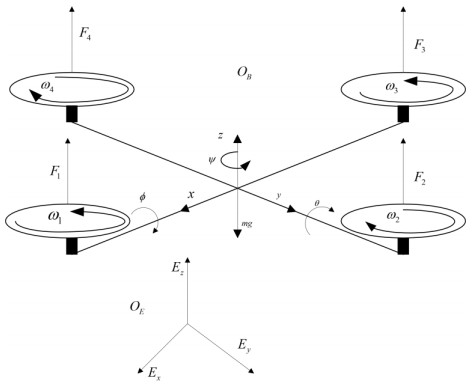
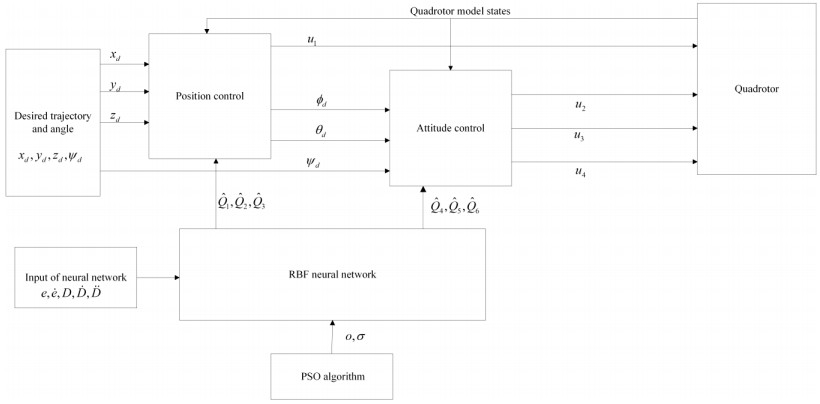

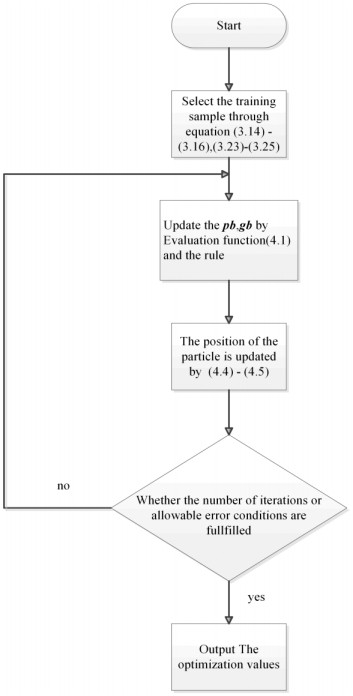
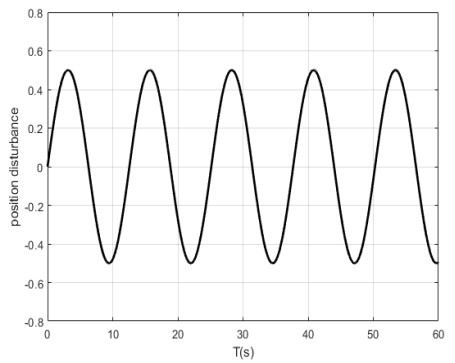
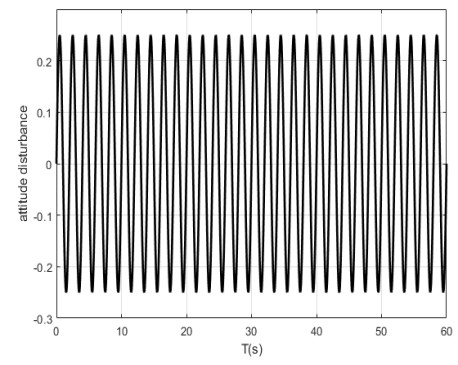
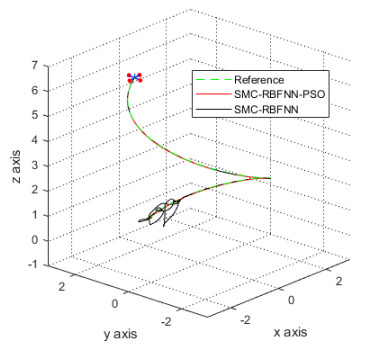
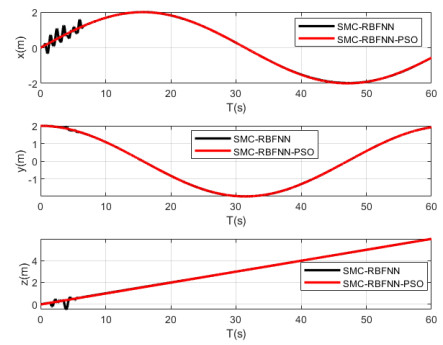
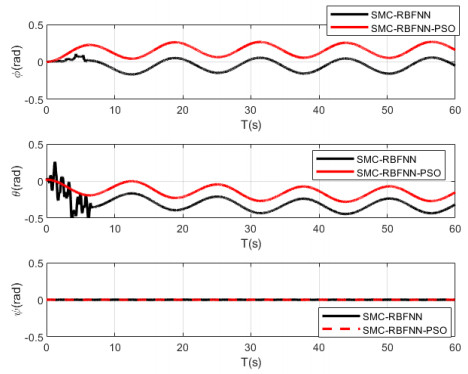
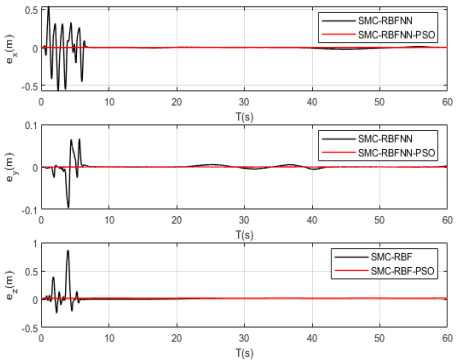


 DownLoad:
DownLoad: